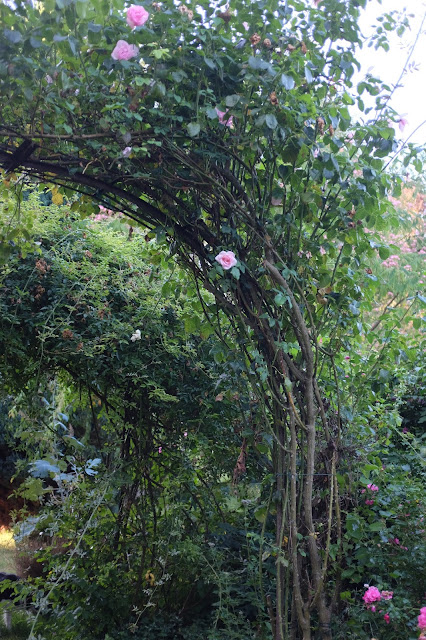Here is the history of the chateau that I promised to provide in my previous post. It is a very abridged version. If you visit the chateau, the owners will be kind enough to give you a much longer version. I decided that it will be just too long for my blog.
The chateau was built between 1568 and 1583 for Pierre de Montmorencey (all these names keep invoking in my mind Alexandre Dumas' novels and especially 'La Reine Margot') and remained in the family until the end of the seventeenth century. The family's most illustrious representative was probably Francoise de Montmorency-Fosseux, Pierre's daughter, who became mistress to Henry, king of Navarre, the future Henry IV. Francoise had been made of honour to the queen of Navarre (Marguerite de Valois) and had accompanied her into Gascony in 1579 - she was just fourteen at the time! But 'la belle Fosseuse' was ultimately banished from the court and came back to live in her chateau at Fosseuse, where she married Baron de Saint Mars la Pile.
The property, called 'le domaine de Fosseuse', covering about three thousand hectares, changed hands three times before passing into possession of the Breton family De Kergorlay, on their return from exile in Moldavia in 1807. They laid out an ambitious plan for the grounds and even changed the course of the river to create a small lake. Also they collected and planted a variety of trees, some of them rare, to create what came to be called a 'du Barry' romantic landscape.

Then the estate fell on evil days. The last Comte de Kergorlay didn't have direct descendants and the property was broken up in 1936 and sold to different buyers. The chateau and the surrounding parkland was sold to a timber-merchant who felled the mature trees in the magnificent landscaped park to provide wood for a ... clothes-peg factory! The interior was broken up and sold to an antique dealer who tore out the wrought-iron banisters and balconies, the parquet floors, marble fire-places, wooden panels and tapestries.
Then the property, almost a ruin, was sold to Mr Henry Allenbach in 1938 (the uncle of the present owners), but now it was reduced to 75 acres. He didn't have any intention of living there but being bombed out of his home in Le Havre in 1943, he fitted up a number of rooms in the building, repaired all the 2000 windows broken by vandals and settled in for the rest of his life.It can be said that he saved the chateau from total destruction.
The present owners are doing a splendid work in preserving whatever was left of this magnificent property. It is wonderful to see their dedication to the place - to its history as well as to its present.



it breaks my heart that the trees were cut down at all much less for clothes pegs. i hope part of the restoration project is to plant as many trees as possible.
ReplyDelete